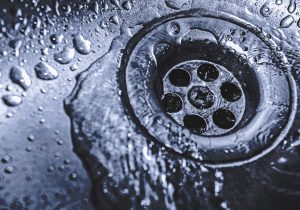 We’re big fans of all the crafters, woodworkers, and general do-it-yourselfers out there. When you can look up a solution for a home problem and have it fixed relatively quickly, why call in a handyman to help?
We’re big fans of all the crafters, woodworkers, and general do-it-yourselfers out there. When you can look up a solution for a home problem and have it fixed relatively quickly, why call in a handyman to help?
We don’t typically encourage DIY work for large plumbing problems, but there are even some things that seem complicated you can handle yourself: resetting the garbage disposal, cleaning the aerator when there’s no water pressure, and even unclogging a drain. Some drain clogs have simple solutions, or at least a solution that does not require costly equipment or professional drain cleaning. But that doesn’t apply to all drain clogs. How do you know the difference?
Is the drain in multiple parts of the house?
First, you need to assess whether there is only a single drain that’s clogged or if the problem exists throughout the home. If multiple drains in sinks or tubs around the house are blocked up too, the issue likely has to do with the sewer line, the part of the plumbing buried beneath the home, or at least a problem further along in the drain line.
If it’s only in one part of the home, you still might need to call a plumber. But at least you can start trying some other DIY fixes.
Have you tried a plunger?
If you have not yet tried a plunger, that should likely be your next step. A plunger is a great tool for toilets, sinks, and tubs alike. The pressure can knock the blockage loose from the pipes, allowing it to move down the rest of the pipes. It may only require some persistence.
For a sink or tub, the standard cup plunger will do, but for the toilet you want to purchase a plunger with an extra rubber flange in the center of the cup for better sealing. Get a bit of water into the plunger first, and then ensure a proper seal. Use the same amount of force pulling up as pushing down, and repeat the process a couple of dozen times, at least, before moving on.
What about this DIY drain cleaner?
Chemical drain cleaners can wear down the lining of the drains, and are rarely as effective as you need them to be. On top of all that, they are toxic. Try this instead.
- Add ½ cup of baking soda to the drains.
- Follow that up with 1 cup of white vinegar.
- Wait 5 minutes and follow it up with hot or boiling water from the stove.
Do you own a drain auger?
If you already own a drain auger, it may be worth trying this as your next step. However, it’s possible to do more harm than good, pushing the issue further along in the drain. Typically, you want to continue pushing or cranking the auger down the drain until it stops, then push a bit harder before pulling the auger back up. If you feel uncertain about using a drain auger on your own, call in a plumber. They have longer, more effective augers and the experience to use them safely.
For quality plumbing in Wayne, NJ, contact the experts at MarGo Plumbing Heating Cooling Inc.
